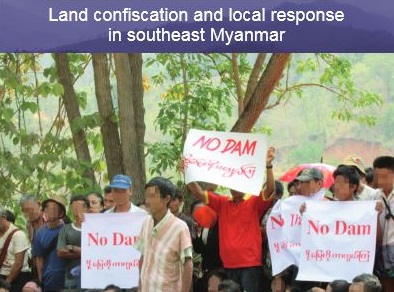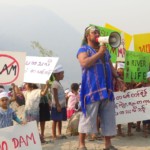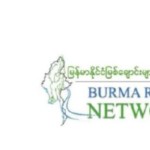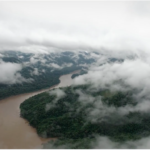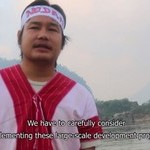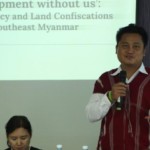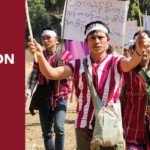Statement by Karen Human Rights Group (KHRG) | June 30, 2015
ORCHID HOTEL, YANGON – Three years after the 2012 preliminary ceasefire negotiations between the Myanmar government and the Karen National Union (KNU), reported instances of land confiscation continue to increase in southeast Myanmar. In the 2015 report, ‘With only our voices, what can we do?’, KHRG highlights four main land use types which lead to land confiscation, including infrastructure projects, natural resource extraction, commercial agriculture projects, and military activities. Based on testimony from local villagers, the Myanmar government; domestic corporate actors; and Tatmadaw and Karen ethnic armed groups (EAGs) are all identified as being complicit in the confiscation of land from local communities in southeast Myanmar. However, local villagers report using a variety of strategies to prevent and mitigate the impacts of land confiscation, such as reaching out to civil society organisations (CSOs) and the media, negotiating with actors involved in projects, and lobbying both the Myanmar government and Karen EAGs.
Analysing information from the field gathered between December 2012 and January 2015, an increase in the number and types of land confiscation cases was identified, compared to 2011 – 2012. In the vast majority of reported cases, local villagers stated that they were not consulted properly by development actors. “Development actors have claimed that they conduct consultations with both local villagers and civil society in advance of projects,” said Saw Albert, Field Director of KHRG. He continued, “If this was really the case, why have we received more and more reports regarding land being confiscated against the will of local communities? Why are villagers not being consulted in advance of land confiscation, and not compensated for what they have lost? Why are villagers’ voices ignored? There is a real need for meaningful consultations, and free, prior and informed consent before the implementation of any project, and not only in words, but in deeds.”
The purpose of launching this report in Yangon is to draw the attention of CSOs, NGOs, government bodies, and other stakeholders who are working on land issues, in order to raise awareness of what is happening on the ground in southeast Myanmar. The findings and recommendations found in this report are particularly relevant in the context of the ongoing consultations on the National Land Use Policy. “The reality on the ground is that villagers’ lands are not adequately protected by existing land laws and policies,” said Saw Way Lay, KHRG Advocacy Coordinator. He added, “All development actors must recognise the central role land plays in the lives of local communities, and villagers’ rights and voices must be heard and respected in all project planning and implementation.”
KHRG is an independent, unaffiliated, locally-led organisation committed to promoting the perspective of villagers in southeast Myanmar, whose voices are often ignored. Founded in 1992, KHRG engages in field research, documentation, report-writing and local and international advocacy. KHRG also conducts workshops with villagers where they can openly discuss the abuses and the challenges they face, gain greater knowledge of protection strategies, and consider options for collective action in their local area. Twice nominated for the Nobel Peace Prize, KHRG was the 2013 recipient of the Asia Democracy and Human Rights Award from the Taiwan Foundation for Democracy. KHRG is the first human rights organisation working in Myanmar to win the award.
Contact:
Saw Albert, Field Director albert@khrg.org
Saw Way Lay, Advocacy Coordinator waylay@khrg.org
Naw Eh Thaw, Advocacy Officer ehthaw@khrg.org
+66 852 685 519 (Thailand)
+95 979 166 2569 (Myanmar)
Download full report (PDF) in English | Burmese
Download the briefer (PDF) in English | Burmese

